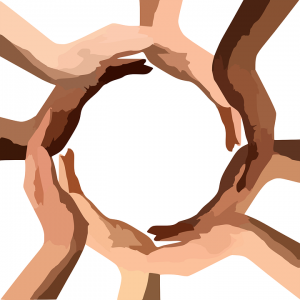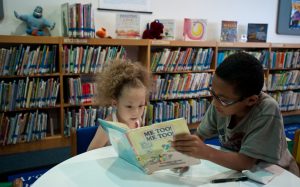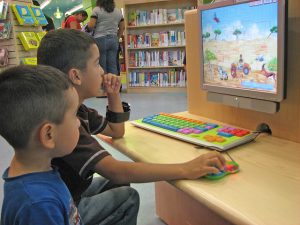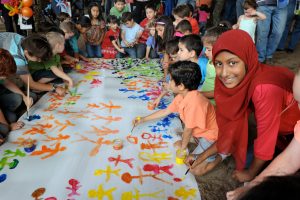 There have been significant shifts in the demographics of America’s youth in recent years. According to data provided by the Annie E. Casey Foundation (2016), there are more than 73.6 million children under the age of eighteen in the United States, and 48 percent of them are youth of color – that is, youth who identify as Latinx, African American, Black, Asian, Native American and/or multiracial. More than one-fifth of America’s children are immigrants or children of immigrants (O’Hare, 2011). Of the school-age children (5 to 17) nationally, more than one in five speaks a language other than English at home. The largest increases from 2010 to 2013 were for speakers of Spanish, Chinese, and Arabic. It is important to note that many of those who speak a foreign language at home are not immigrants. Data show that of the native-born Americans who speak a language other than English at home, 9.9 million (36 percent) are 17 and under (Ziegler & Caramota, 2014).
There have been significant shifts in the demographics of America’s youth in recent years. According to data provided by the Annie E. Casey Foundation (2016), there are more than 73.6 million children under the age of eighteen in the United States, and 48 percent of them are youth of color – that is, youth who identify as Latinx, African American, Black, Asian, Native American and/or multiracial. More than one-fifth of America’s children are immigrants or children of immigrants (O’Hare, 2011). Of the school-age children (5 to 17) nationally, more than one in five speaks a language other than English at home. The largest increases from 2010 to 2013 were for speakers of Spanish, Chinese, and Arabic. It is important to note that many of those who speak a foreign language at home are not immigrants. Data show that of the native-born Americans who speak a language other than English at home, 9.9 million (36 percent) are 17 and under (Ziegler & Caramota, 2014).
Race, ethnicity, and language are not the only facets of diversity impacting the educational and life experiences of youth in the United States. A recent report by the trend forecasting agency J. Walter Thompson Innovation Group (2016) found that only 48 percent of Gen Zs (youth born since the late 1990’s) identify as exclusively heterosexual, although the exact number of American children and teens who identify as lesbian, gay, bisexual and/or transgender (LGBT) is difficult to determine.
Beyond race, language, and gender, today’s youth are also diverse in terms of abilities, socioeconomic status, and religious beliefs. Both the number and percentage of students who receive special education services have risen from the 1990-1991 school year, in which 4.7 million or 11% of public school students received such services, to the 2013-2014 school year, in which 6.5 million or 13% of students received these services (National Center for Education Statistics, 2016). According to the National Center for Children in Poverty (2016), about 15 million children in the United States – 21% of all US children – live below the federal poverty threshold. Survey studies of youth religious beliefs are rare, however the United States as a whole is experiencing increasing religious diversity. The Pew Research Center (2015) reported that between 2007 and 2014, the Christian share of the U.S. population fell by nearly eight percentage points, while the percentage of unaffiliated and non-Christian Americans grew significantly over the same time period.
Libraries, because of their commitment to equity, inclusion, and social responsibility, are especially impacted by societal changes related to diversity. The American Library Association’s policy manual states that “libraries can and should play a crucial role in empowering diverse populations for full participation in a democratic society” (ALA, 2013, p.23). Furthermore, the policy document stresses the importance of a culturally competent library workforce, stating that “cultural competence is critical to the equitable provision of library and information services,” and encouraging “training and ongoing education that promote awareness of and sensitivity to diversity” (p.23).
Respect for diversity, inclusion of cultural values, and provision of culturally competent services are also central to the work of ALA’s youth divisions. In their Competencies for Librarians Serving Children in Public Libraries, the Association of Library Services to Children (ALSC) specifically calls for librarians to develop “an understanding of her or his own personal and cultural values, beliefs, and sociocultural identities, including racial, class, and gender identities, as a first step in appreciating the importance of culturally diverse identities in the workplace and wider community” and “an understanding of the effects of racism, ethnocentrism, classism, heterosexism, genderism, ableism, and other systems of discrimination and exclusion within the profession, and of techniques for disrupting them and promoting cultural competence” (ALSC, 2015, n.p.). Similarly, the Young Adult Library Services Association (YALSA), stresses the need for “greater cultural competency on the part of those working for and with teens, based on the growing diversity of the U.S. population” (YALSA, 2016, n.p.). YALSA’s new organizational plan includes developing “a program of training and assessment for cultural competency” as a key strategy for transforming teen services to alleviate the challenges teens face, and put all teens first (YALSA, 2016, n.p.). The American Association of School Librarians (AASL) explicitly states that “equitable access is a key component for education” (2009, p. 13).
Unfortunately, evidence suggests that librarians and library staff are underprepared for the type of culturally competent practice advocated by ALA, ALSC, YALSA, and AASL, having received little if any training do so in either their preservice programs or on the job. Despite the fact that the 2008 American Library Association’s Standards for Accreditation of Master’s Programs in Library and Information Studies require that program objectives reflect “the role of the library and information services in a diverse, global society, including the role of serving the needs of underserved groups,” students graduating from LIS programs report having taken few, if any, classes related to diversity (ALA, 2008). Recent research focused on school librarians has found that while K-12 librarians recognize the need for cultural knowledge and awareness in developing effective instruction for diverse youth, they also feel they lack the knowledge and experience necessary to enact such instruction (Hughes-Hassell & Stivers, 2015).
In response to this need for diversity-related professional development, we have created an online resource that provides professional resources (print and digital) that can be used by individuals or organizations to prepare librarians, and other library staff, who serve youth in public and school libraries to become culturally competent and equity literate, precursors to engaging in culturally responsive practice.
-
Cultural competence is the ability to recognize the significance of culture in one’s own life and in the lives of others; and come to know and respect diverse cultural backgrounds and characteristics through interaction with individuals from diverse linguistic, cultural and socioeconomic groups; and to fully integrate the culture of diverse groups into services, work and institutions in order to enhance the lives of both those being served by the library profession and those engaged in service (Overall, 2009).
- Equity literacy is the ability to recognize biases and inequities in materials, interactions, and policies, respond to biases, discrimination and inequities in a thoughtful and equitable manner, redress biases and inequities in the long term by studying how bigger social change can happen, and create and sustain a bias-free equitable learning environment (Gorski & Swalwell, 2015).
We have focused specifically on providing resources that will help librarians gain the knowledge and skills required to create inclusive and equitable libraries that meet the needs of diverse youth, including racially/ethnically diverse youth, youth for whom English is not their first language, and youth who identify as LGBTQ. We have also included professional development resources related to religious and socioeconomic diversity among youth, especially as these intersect with race/ethnicity, language, and gender/sexuality. To avoid duplicating existing resources, we have chosen to exclude professional development resources related exclusively to ability among youth. Project Enable (http://projectenable.syr.edu), developed by the Syracuse University’s iSchool, already provides free online professional training for both public, school, and academic librarians serving library patrons, including youth, with disabilities.
References
American Association of School Librarians. 2009. Empowering learners: Guidelines for school library media programs. Chicago, IL: ALA.
American Library Association. (2013). ALA Policy Manual. Chicago, IL: ALA.
American Library Association (2008). Standards for accreditation of master’s programs in library and information studies. Chicago, IL: ALA.
Annie E. Casey Foundation. (2015). Child population by race: Baltimore. Annie E. Casey Foundation. Retrieved from http://datacenter.kidscount.org/
Association of Library Services to Children. (2015) Competencies for librarians serving children in public libraries. Chicago, IL: ALA. http://www.ala.org/alsc/edcareeers/alsccorecomps
Gorski, P. C., & and Swalwell, K. (2015). Equity literacy for all. Educational Leadership, 72(6), 34-40.
Greytak, E.A., Kosciw, J.G., Villenas, C., & Giga, N.M. (2016). From teasing to torment: School climate revisited. Washington, D.C.: GLSEN.
Hughes-Hassell, S. and Stivers, J. (2015). Examining youth services librarians’ perceptions of cultural knowledge as an integral part of their professional practice. School Libraries Worldwide, 21(1), 121-136.
J Walter Thompson Associates. (2016). Generation Z executive study. New York: J Walter Thompson Associates Worldwide. Retrieved 10/12/2016 from http://www.slideshare.net/jwtintelligence/jwt-generation-z-48070734
National Center for Children in Poverty (2016). Child poverty. Retrieved from http://www.nccp.org/topics/childpoverty.html
National Center for Education Statistics (2016). The condition of education: Children and youth with disabilities. Retrieved from http://nces.ed.gov/programs/coe/indicator_cgg.asp
O’Hare, W. (2011). The changing child population of the United States: Analysis of data from the 2010 census. Baltimore, MD: The Annie E. Casey Foundation.
Overall, P. M. (2009). Cultural competence: A conceptual framework for library information science professionals. The Library Quarterly, 79(2), 175-204.
Pew Research Center (2015). America’s changing religious landscape. Retrieved from http://www.pewforum.org/2015/05/12/americas-changing-religious-landscape/
Young Adult Library Services Association. (2016). 3-Year organizational plan, 2016-2018. Chicago: ALA. Retrieved from http://www.ala.org/yalsa/aboutyalsa/strategicplan
Ziegler K., & Camarota, S. (2014). One in five U.S. residents speaks foreign language at home, record 61.8 million. Center for Immigration Studies. Retrieved from http://cis.org/record-one-in-five-us-residents-speaks-language-other-than-english-at-home


